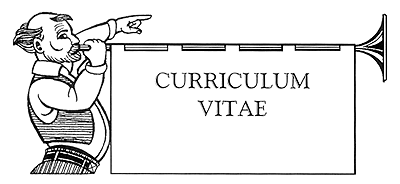ALASDAIR GRAY'S PERSONAL


1897 My father, Alexander, was born in Bridgeton, east Glasgow, by Jean Stevenson, daughter of a coalminer. She had worked as a power-loom weaver before marrying William Gray, industrial blacksmith, Congregational kirk elder and Sunday-School teacher. William's favourite hobby was walking; his political heroes were William Ewart Gladstone and Keir Hardie. Their son Alex left school early, became a clerk on a dockyard weighbridge and part-time soldier in the territorial army. When war was declared in 1914 he joined the Black Watch regiment, fought in France, became quarter-master sergeant and suffered a shrapnel wound in the belly in 1917 or 18, for which he received a small pension for the rest of his life. From the end of the first world war to the start of the second he worked a cardboard cutting machine in a Bridgeton box-making factory, and in his spare time was a keen hill-walker, mountain-climber and worker for non-profit making companies of a social-equalitarian, recreational kind: a short-lived entertainment company called the Co-optimists, the Rambler's Federation, Camping Club of Great Britain, Scottish Youth hostel Association and Holiday Fellowship. He did unpaid secretarial work for these, having mastered typing, and for a short time wrote a column in the Glasgow Herald about open-air affairs. He enjoyed the works of George Bernard Shaw - had his complete plays in the 1934 edition, also the Everyman Edition of Ibsen's plays in Archer's translation. The 1914-1918 war made an agnostic out of Alex Gray but (as he said) 'not an evangelical agnostic'. He never quarrelled about religion with his parents or anyone else.
1902
My mother Amy was horn in
1931 Alex and Amy married and came to live at 11 Findhorn Street, Riddrie, east Glasgow: one of the earliest and best planned housing schemes built under the Wheatley Act, the only equalitarian measure passed by the first Labour government elected in 1924. It lay between Alexandra Park on the west, Cumbernauld Road on the south, the huge double locks of Monkland Canal to the north, which curved to pass under Cumbernauld Road, enclosing Riddrie on the east before skirting the grounds of Barlinnie Jail. This scheme contained most things its inhabitants could need; two small shopping centres with baker, butcher, fishmonger, grocer, barber, newsagent-tobacconist, sweatshop, fish-and-chip shop, chemist; two Protestant churches, one of architectural merit; a Protestant primary school, splendid public library, a bowling green and allotments; also (on the other side of the Cumbernauld Road) two large cinemas, a Catholic church and primary school. The western half of the scheme was three storey tenements, the eastern was semidetached villas, but many gardens, a tree-lined boulevard, the nearby park and a craggy knoll crowned with big old trees gave it a suburban, even rural feeling compared to Bridgeton, my parents' pre-marital home. Bridgeton was a working-class district that was not a slum, but a place where families of any size lived in two-room flats, the largest room being a kitchen with one cold-water tap, a fire range for all heating and cooling, and a bed recess. The other room was usually much smaller. There were communal lavatories on the communal stair, and municipal bathhouses for those who paid to wash in warm water. Interior lighting was still mostly gas. Alex Gray had lived in such a flat with three half-brothers by his father's first wife, who slept in the smaller room, and a sister he slept with in a hurly bed – a low bed with wheels which was stored under the kitchen recess bed by day and pulled out at night. Alex and Amy's Riddrie flat had three rooms with a fireplace in each, a small kitchen, a lavatory bathroom, hot-water supply from a tank behind the living-room fire, and electrical light. Alex's half-brothers emigrated and his parents died before my birth. Amy's parents came to live two blocks away from her in a semi-detached villa on the Cumbernauld Road.
I have annotated these three entries more than most others because they show why I know that Socialism can improve social life, that the work we like best is not done, for money, and that books and art are liberating.
